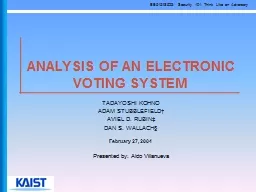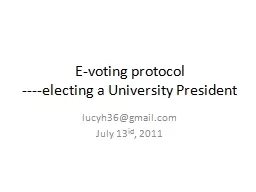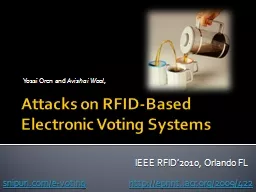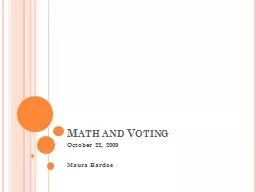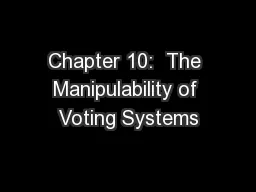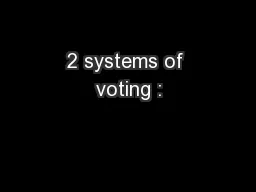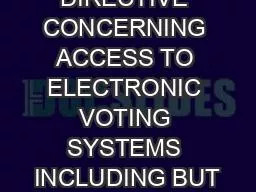PPT-Analysis of an Electronic Voting System
Author : karlyn-bohler | Published Date : 2016-11-04
TADAYOSHI KOHNO ADAM STUBBLEFIELD AVIEL D RUBIN DAN S WALLACH February 27 2004 Presented by Aldo Villanueva Outline Palm Beach Fiasco Introducing DRE History of
Presentation Embed Code
Download Presentation
Download Presentation The PPT/PDF document "Analysis of an Electronic Voting System" is the property of its rightful owner. Permission is granted to download and print the materials on this website for personal, non-commercial use only, and to display it on your personal computer provided you do not modify the materials and that you retain all copyright notices contained in the materials. By downloading content from our website, you accept the terms of this agreement.
Analysis of an Electronic Voting System: Transcript
Download Rules Of Document
"Analysis of an Electronic Voting System"The content belongs to its owner. You may download and print it for personal use, without modification, and keep all copyright notices. By downloading, you agree to these terms.
Related Documents

